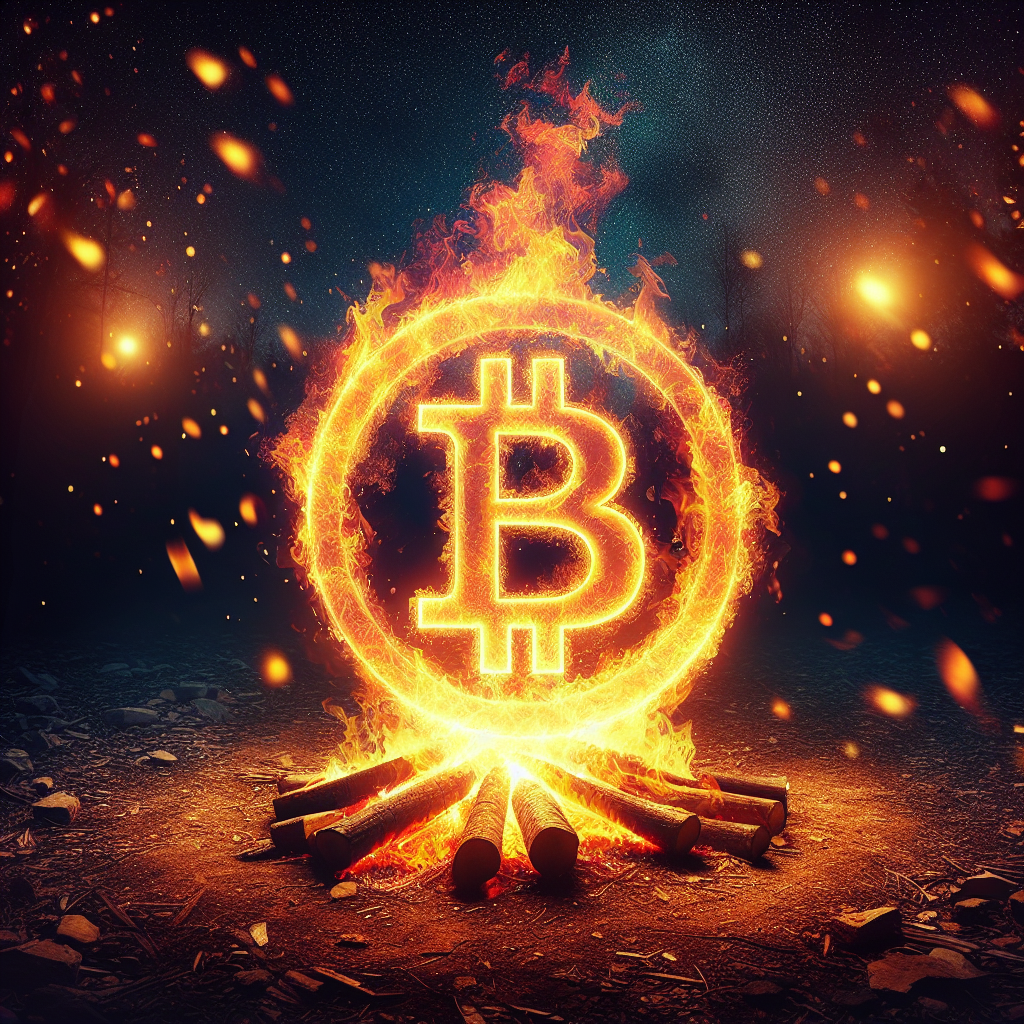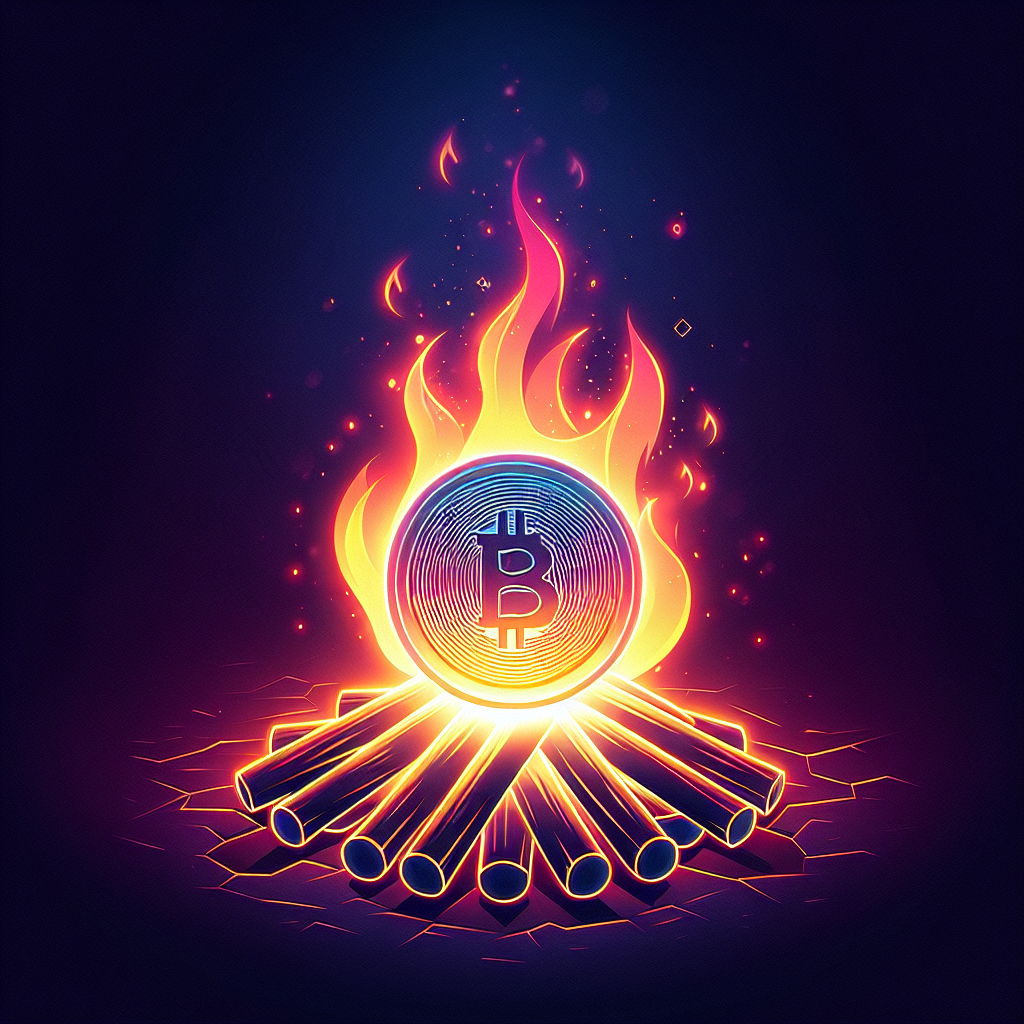So you’ve heard about cryptocurrency and the various trends and terminologies associated with it, but have you come across the term “token burns”? If not, don’t worry, you’re not alone. Token burns are a fascinating concept in cryptocurrency that involves the intentional destruction or removal of a certain amount of tokens from circulation. But why would anyone want to burn tokens? And what purpose does it serve? In this article, we’ll unravel the mystery behind token burns and explore their significance in the world of digital currencies.
Token Burns In Cryptocurrency
Cryptocurrencies have gained immense popularity in recent years, and with this surge in interest, various innovative mechanisms have emerged within the crypto space. One such mechanism is the concept of token burns. In this article, we will delve into the world of token burns, exploring their definition, purpose, types, benefits and drawbacks, examples, mechanics, impact on token value, comparison with buybacks, supply and demand dynamics, and regulatory considerations.
Definition of Token Burns
Token burns, also known as coin burns or token destruction events, refer to the deliberate removal or destruction of a certain number of tokens from circulation. Instead of being kept in a wallet or used for transactions, these tokens are permanently eliminated from the total supply. This process is typically carried out by the token issuer or project team to reduce the circulating supply of tokens.
Purpose of Token Burns
The primary purpose of token burns is to create scarcity and increase the value of a cryptocurrency. By reducing the total supply, token burns aim to improve the supply and demand dynamics, making each remaining token more valuable. This can incentivize investors to hold onto their tokens, leading to increased investment and potentially driving up the price. Token burns can also be used to align the interests of token holders and the project team, as both parties benefit from the appreciation of the remaining tokens.

Types of Token Burns
There are several types of token burns that can be implemented by cryptocurrency projects. The most common types include:
-
Burn through transaction fees: Some cryptocurrencies, such as Binance Coin (BNB), employ a token burning mechanism where a portion of the transaction fees collected on their platform is used to buy and subsequently burn their native tokens. This continual buy and burn process helps to reduce the circulating supply over time.
-
Timed Burns: In this type of token burn, a predetermined amount of tokens is burned at regular intervals or on specific dates. This approach allows for a systematic reduction in supply and generates anticipation among token holders, potentially driving up the token’s value in the process.
-
Event-driven Burns: These burns are triggered by specific events or milestones achieved by the cryptocurrency project. For example, a project may burn a certain percentage of tokens upon the successful launch of a product or reaching a certain number of users. Event-driven burns can create excitement and positive sentiment around the project, encouraging investor participation.
Benefits and Drawbacks of Token Burns
Token burns come with their own set of advantages and disadvantages. Understanding these can provide insights into the potential impact and risks associated with implementing such mechanisms.
Benefits:
-
Increased Scarcity: Token burns reduce the supply of tokens, creating a limited quantity available in the market. This increased scarcity can drive demand and potentially result in higher token prices.
-
Enhanced Investor Confidence: By demonstrating a commitment to token value appreciation, token burns can instill confidence in investors and attract new participants to the project.
-
Alignment of Incentives: Token burns can align the interests of token holders and the project team. Both parties benefit from a reduction in supply, as it increases the value of the remaining tokens.
Drawbacks:
-
Market Manipulation Concerns: Some critics argue that token burns can be used as a tool for market manipulation. The intentional destruction of tokens can artificially inflate the value of the remaining tokens, potentially giving an unfair advantage to early investors or project insiders.
-
Lack of Transparency: Without proper disclosure and transparency, investors may have difficulty assessing the true motives and intentions behind token burns. This can undermine trust and lead to skepticism within the community.
-
Irreversible Process: Once tokens are burned, they are permanently removed from circulation, making the process irreversible. This means that if a mistake occurs during the burn process, it cannot be undone.

Examples of Token Burns
Several popular cryptocurrency projects have implemented token burns with varying degrees of success. One notable example is Binance Coin (BNB), which burns a portion of their native tokens every quarter based on their trading volume. This consistent burning mechanism has helped BNB become one of the top-performing cryptocurrencies, with its price experiencing significant appreciation over time.
Another example is TRON (TRX), which conducted a series of token burns to reduce their supply. These burns were triggered by the migration of TRON’s tokens from the Ethereum blockchain to their native blockchain. This strategic move not only enhanced the scarcity of TRX tokens but also showcased TRON’s commitment to its long-term vision.
Token Burn Mechanics
The mechanics of token burns can vary depending on the cryptocurrency project’s design and objectives. However, the general process involves the following steps:
-
Determining the Burn Amount: The project team decides the quantity or percentage of tokens to be burned. This decision is often influenced by factors such as the project’s roadmap, market conditions, and desired level of scarcity.
-
Announcing the Burn: The project team communicates the upcoming token burn event to the community. This announcement includes details such as the date, method, and purpose of the burn, ensuring transparency and allowing investors to prepare accordingly.
-
Executing the Burn: On the specified date or during the designated period, the tokens are permanently removed from circulation. This step can involve the transfer of tokens to a designated burn address, rendering them inaccessible and unusable.
-
Proof of Burn: To maintain transparency, token burns are often accompanied by a proof or record that verifies the destruction of tokens. This proof can be in the form of a public transaction record or a dedicated burn wallet address.
How Token Burns Impact Token Value
Token burns have the potential to impact the value of a cryptocurrency in various ways. When tokens are burned, the total supply decreases while the demand remains constant or potentially increases. This reduction in supply relative to demand can create a scarcity effect, driving up the token’s value.
Additionally, token burns can generate positive sentiment and attract new investors who anticipate increased value appreciation. The perception that a cryptocurrency project is committed to value preservation and alignment of investor interests can bolster investor confidence, leading to increased demand and subsequent price appreciation.
However, it is important to note that token burns are not a guaranteed path to value appreciation. Market conditions, project fundamentals, and investor sentiment all play significant roles in determining a cryptocurrency’s value. Token burns should be viewed as one factor among many that can impact token value.
Token Burn vs. Buyback
Token burns are often compared to buyback programs, as both mechanisms aim to reduce the circulating supply of tokens. However, there are distinct differences between these two approaches.
Token burns involve the permanent removal of tokens from circulation, rendering them unusable and irretrievable. On the other hand, buyback programs involve the repurchasing of tokens from the market, which can subsequently be used for various purposes, such as redistribution or liquidity provision.
While both mechanisms can create scarcity and potentially increase token value, token burns are often seen as a more definitive and transparent approach, as the burned tokens are permanently taken out of circulation. Buyback programs, although they can lead to reduced supply, allow for the possibility of those tokens re-entering the market at a later date.
Token Burns and Supply/Demand Dynamics
One of the key implications of token burns is their impact on the supply and demand dynamics within a cryptocurrency ecosystem. By reducing the total supply of tokens, token burns shift the supply curve to the left, assuming constant or increasing demand. This reduction in supply relative to demand can create a potential imbalance, potentially leading to upward pressure on token prices.
Moreover, the scarcity created by token burns can lead to FOMO (Fear Of Missing Out) among investors, encouraging them to acquire or hold onto the remaining tokens. This increased demand, coupled with reduced supply, can contribute to sustained price appreciation.
However, it is important to remember that supply and demand dynamics are influenced by a multitude of factors beyond token burns, including market sentiment, economic conditions, regulatory developments, and technological advancements.
Regulatory Considerations for Token Burns
As with any aspect of the cryptocurrency industry, regulatory considerations play an important role in the implementation and legality of token burns. The regulatory landscape surrounding token burns varies across jurisdictions and may be subject to existing securities, tax, and consumer protection laws.
Token burns can potentially be perceived as acts of market manipulation if they are used to artificially inflate token prices. Therefore, it is crucial for cryptocurrency projects to ensure transparency, proper disclosure, and compliance with relevant regulations when conducting token burns.
Before implementing token burn mechanisms, project teams often seek legal counsel to ensure compliance with applicable laws and regulations. Engaging with regulators and staying updated on evolving regulatory frameworks can help cryptocurrency projects navigate the complex landscape surrounding token burns.
In conclusion, token burns are a fascinating concept within the cryptocurrency world. They serve the purpose of creating scarcity, aligning investor and project team interests, and potentially increasing token value. By understanding the mechanics, benefits, drawbacks, and implications of token burns, investors and enthusiasts can navigate the rapidly evolving crypto landscape with greater clarity and informed decision-making.

